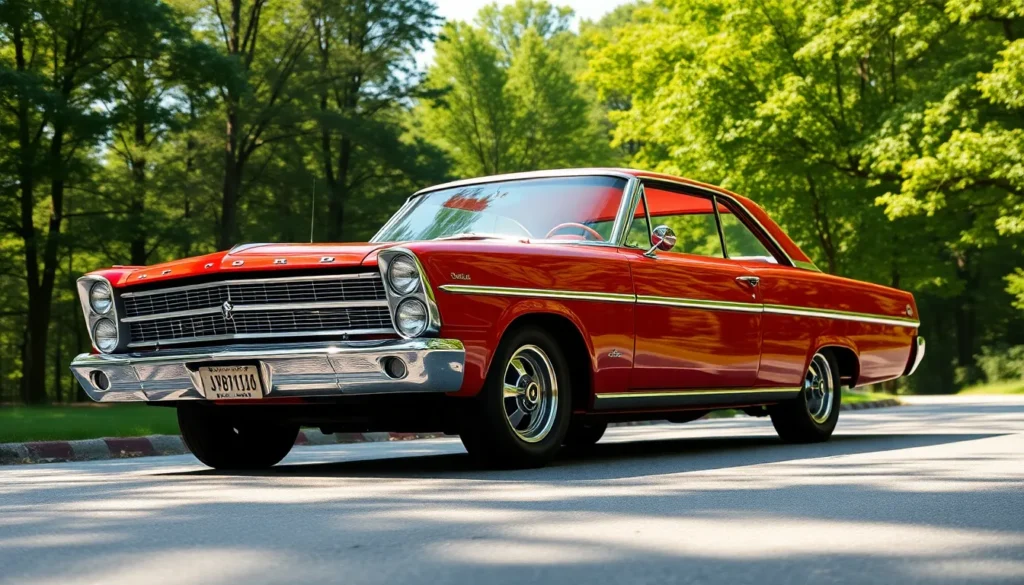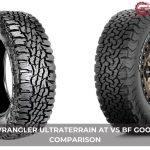The Ford Galaxie 500 stands as one of America’s most iconic full-size vehicles that dominated the roads throughout the 1960s and early 1970s. We’ve witnessed countless automotive legends come and go but few captured the essence of American muscle and family comfort quite like this remarkable machine.
From its sleek fastback silhouette to its powerful V8 engine options the Galaxie 500 represented Ford’s answer to the growing demand for performance-oriented family cars. We’re talking about a vehicle that seamlessly blended everyday practicality with genuine street credibility – something that’s increasingly rare in today’s automotive industry.
Whether you’re a classic car enthusiast seeking your next restoration project or simply curious about automotive history the Ford Galaxie 500 offers fascinating insights into an era when cars were built with character and soul. Let’s explore what made this particular Ford model such an enduring symbol of American automotive excellence.
Ford Galaxie 500 Overview and History
Ford launched the Galaxie 500 in 1962 as a premium trim level within the full-size Galaxie lineup. The model emerged from Ford’s strategic decision to compete directly with Chevrolet’s Impala SS and Plymouth’s Sport Fury in the growing performance oriented family car market.
Production began at Ford’s various assembly plants across North America including facilities in Detroit, Kansas City, and Los Angeles. We see the Galaxie 500 representing Ford’s engineering commitment to combining luxury appointments with available high performance powertrains during the muscle car era.
The nameplate derived from Ford’s successful participation in NASCAR racing where Galaxie models dominated superspeedways throughout the early 1960s. Racing victories at Daytona 500, Atlanta Motor Speedway, and other major tracks directly influenced consumer perception and sales success of the street versions.
Manufacturing continued through multiple generations with important updates occurring in 1965 and 1968. Ford produced approximately 6.2 million Galaxie vehicles total between 1959 and 1974 with the 500 trim representing roughly 40% of overall production numbers.
Design evolution reflected changing consumer preferences as Ford transitioned from the angular 1962 styling to the more flowing lines introduced for 1965. Body styles included two door hardtops, four door sedans, convertibles, and station wagons with the hardtop configurations proving most popular among performance buyers.
Engine options ranged from economical inline six cylinder units to potent big block V8s including the legendary 427 and 428 Cobra Jet variants. We recognize these powerplant choices positioned the Galaxie 500 as both a practical family vehicle and legitimate performance machine depending on buyer preferences and budget considerations.
The model line faced increasing competition from Ford’s own intermediate Torino and compact Maverick as consumer tastes shifted toward smaller vehicles during the early 1970s. Production ended in 1974 when Ford consolidated its full size offerings under the LTD nameplate exclusively.
Design and Styling Evolution
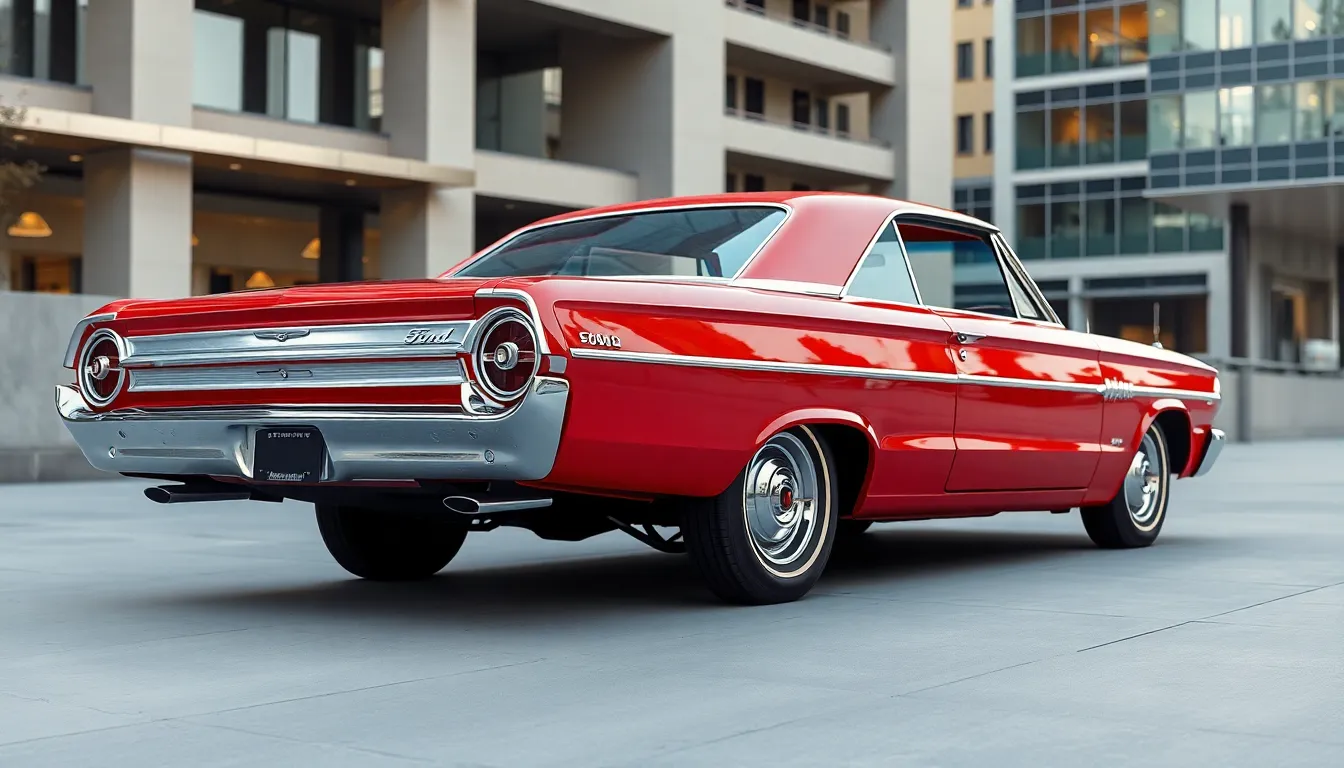
Ford transformed the Galaxie 500’s appearance through strategic redesigns that kept pace with changing automotive trends. These updates maintained the model’s premium positioning while adapting to evolving consumer preferences throughout its production run.
Exterior Design Changes
The 1965 model year brought the most important exterior transformation for the Galaxie 500. Ford replaced the angular styling of earlier years with flowing curves and smoother body lines that created a more sophisticated appearance. Chrome trim became more prominent across the body sides and around the windows, emphasizing the car’s luxury positioning within Ford’s lineup.
Designers introduced stacked headlights in 1965, moving away from the single round headlights of previous years. This change aligned with contemporary automotive styling trends and gave the Galaxie 500 a more distinctive front-end appearance. The grille design featured horizontal bars with integrated Ford lettering that created visual width and presence.
Body proportions shifted in 1968 when Ford implemented another major redesign. Engineers lengthened the wheelbase and increased overall dimensions to accommodate larger engines and improve interior space. The new fastback roofline option became available alongside traditional sedan configurations, appealing to performance-oriented buyers who wanted sportier aesthetics.
Paint options expanded throughout the production years, with Ford offering vibrant colors like Candy Apple Red, Lime Gold, and Acapulco Blue. These bold choices reflected the era’s embrace of expressive automotive styling and helped distinguish the Galaxie 500 from competitors.
Interior Features and Comfort
Interior appointments positioned the Galaxie 500 as Ford’s premium full-size offering with upgraded materials and enhanced comfort features. Vinyl bench seats came standard, while buyers could upgrade to cloth or leather upholstery options depending on the exact trim level and model year.
Dashboard designs evolved significantly between 1962 and 1974, transitioning from simple horizontal layouts to more complex instrument clusters. The 1965 redesign introduced woodgrain trim accents and improved gauge visibility through larger, easier-to-read speedometers and fuel indicators.
Air conditioning became increasingly popular as an optional feature, with Ford improving the system’s efficiency and reducing noise levels in later model years. Power steering and power brakes were available options that enhanced driving comfort, particularly important given the vehicle’s substantial size and weight.
Seating capacity varied by body style, with two-door models accommodating up to six passengers and four-door versions offering room for seven. Rear seat space increased notably in 1968 when Ford extended the wheelbase, providing more legroom for passengers and additional trunk storage capacity.
Engine Options and Performance

The Galaxie 500’s reputation as a performance powerhouse stemmed from its diverse engine lineup and advanced transmission technology. Ford engineers designed multiple V8 configurations to satisfy both casual drivers and performance enthusiasts throughout the model’s production run.
V8 Engine Lineup
Ford offered six distinct V8 engine options across the Galaxie 500’s production years, ranging from economical small-blocks to race-bred big-blocks. The standard 289 cubic inch V8 produced 200 horsepower and delivered reliable daily driving performance for family-oriented buyers.
Performance enthusiasts gravitated toward the 390 cubic inch FE V8, which generated 315 horsepower in standard form and 335 horsepower in Police Interceptor configuration. This engine became the backbone of Ford’s NASCAR racing program and earned widespread recognition for its durability.
The legendary 427 cubic inch V8 represented the pinnacle of Galaxie 500 performance, producing 410 horsepower in street trim and over 425 horsepower in racing applications. Ford manufactured only 11,000 units equipped with this engine between 1963 and 1967, making these vehicles highly sought after by collectors today.
Additional engine options included the 352 cubic inch V8 (250 horsepower), the 406 cubic inch V8 (385 horsepower), and the 428 Cobra Jet V8 (335 horsepower) introduced in 1968. Each powerplant featured exact carburetor configurations and compression ratios optimized for different performance requirements.
| Engine | Displacement | Horsepower | Production Years | Notable Features |
|---|---|---|---|---|
| 289 V8 | 289 cu in | 200 hp | 1963-1966 | Standard equipment |
| 352 V8 | 352 cu in | 250 hp | 1962-1966 | Mid-range option |
| 390 V8 | 390 cu in | 315-335 hp | 1961-1971 | Police Interceptor available |
| 406 V8 | 406 cu in | 385 hp | 1962-1963 | High-performance option |
| 427 V8 | 427 cu in | 410-425 hp | 1963-1967 | Racing-derived engine |
| 428 CJ V8 | 428 cu in | 335 hp | 1968-1971 | Cobra Jet performance |
Transmission Choices
Ford paired these powerful engines with three primary transmission options designed to maximize performance and efficiency. The standard three-speed manual transmission provided direct mechanical connection and appealed to driving purists seeking maximum control.
The optional four-speed manual transmission became available in 1964 and featured close-ratio gearing optimized for performance applications. Racing teams and performance enthusiasts preferred this configuration for its precise shift characteristics and improved acceleration.
Ford’s Cruise-O-Matic three-speed automatic transmission represented the luxury option, offering smooth operation and convenience for daily driving. This transmission featured a torque converter design that multiplied engine torque effectively across all V8 engine options.
Column-mounted shifters came standard with automatic transmissions, while floor-mounted console shifters were available as optional equipment on both manual and automatic configurations. The console shifter package included a full-length center console with additional storage compartments and enhanced interior styling.
Driving Experience and Handling
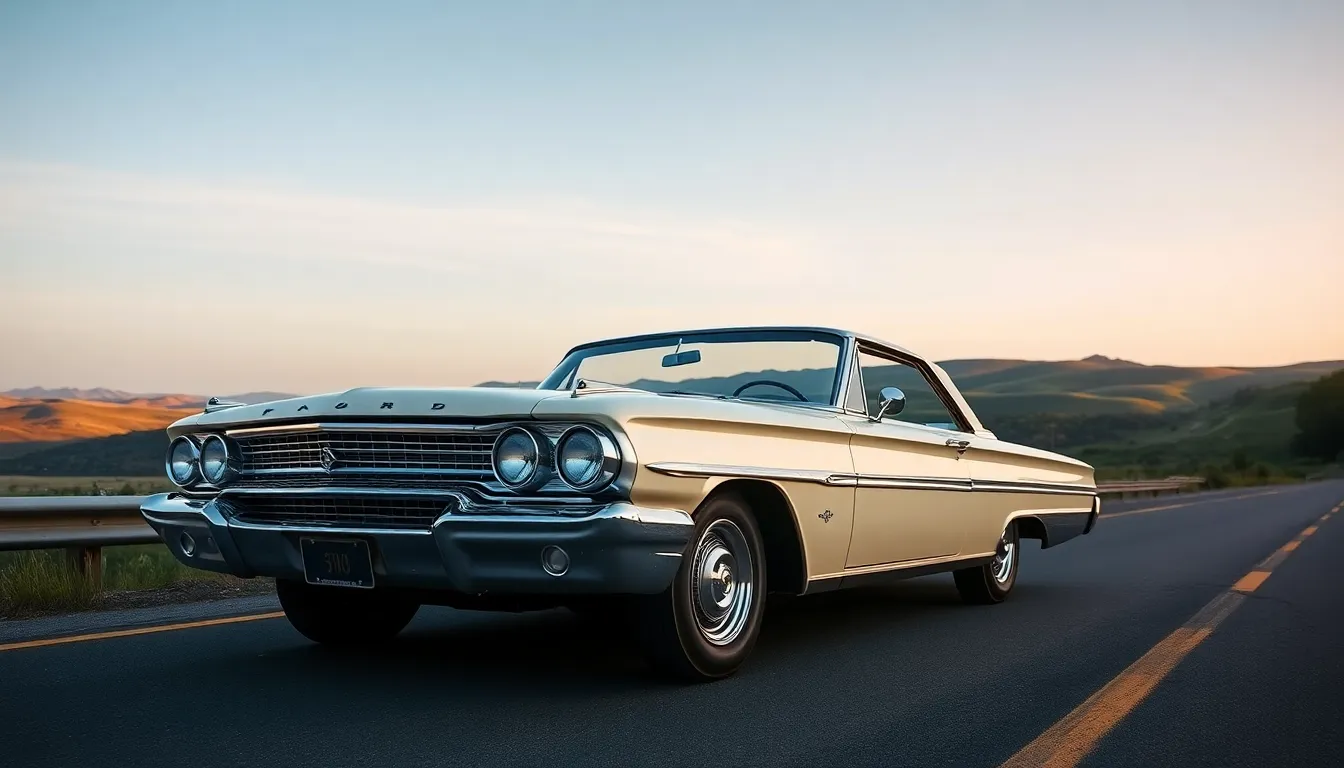
The Ford Galaxie 500’s driving experience reflects its dual nature as both a family cruiser and performance-oriented machine. Behind the wheel, drivers encounter a commanding presence that translates into confident highway cruising and surprisingly capable cornering for a full-size vehicle weighing over 3,800 pounds.
Road Comfort and Ride Quality
Comfort defines the Galaxie 500’s approach to long-distance driving. Ford’s engineers prioritized smooth highway operation through carefully tuned suspension components that absorb road imperfections while maintaining stability at speed. The front independent suspension utilizes coil springs and telescopic shock absorbers, delivering a controlled ride that doesn’t sacrifice passenger comfort for handling precision.
Power steering systems, available as standard equipment on most trim levels, reduce driver fatigue during extended journeys. The steering ratio provides adequate feedback without becoming overly sensitive at highway speeds, making the Galaxie 500 particularly well-suited for cross-country travel where comfort takes precedence over sports car agility.
Performance Handling Characteristics
Handling capabilities vary significantly based on engine selection and optional equipment packages. Models equipped with the 390 cubic inch V8 demonstrate balanced weight distribution that enhances cornering stability compared to base six-cylinder variants. The 427 cubic inch V8 options, while providing exceptional straight-line acceleration, require more careful throttle modulation during cornering due to increased front-end weight.
Body roll remains minimal for a vehicle of this size category when equipped with the optional heavy-duty suspension package. This upgrade includes stiffer springs and larger diameter sway bars that reduce lean angles during aggressive cornering maneuvers. Track-tested models with performance suspension packages achieve lateral acceleration figures approaching 0.75g, impressive for early 1970s full-size sedans.
Braking Performance and Control
Braking systems evolved throughout the Galaxie 500’s production run to accommodate increasing power outputs and vehicle weights. Standard drum brakes provide adequate stopping power for normal driving conditions, with brake fade becoming noticeable only during repeated hard stops from highway speeds.
Power brake options significantly improve pedal feel and reduce required effort, particularly beneficial given the vehicle’s substantial mass. Models equipped with optional front disc brakes, introduced in later production years, demonstrate shorter stopping distances and improved fade resistance during spirited driving sessions.
The brake pedal travel remains consistent across different configurations, though drivers transitioning from modern vehicles may notice increased stopping distances that require adjustment to driving techniques developed for contemporary cars.
Reliability and Common Issues
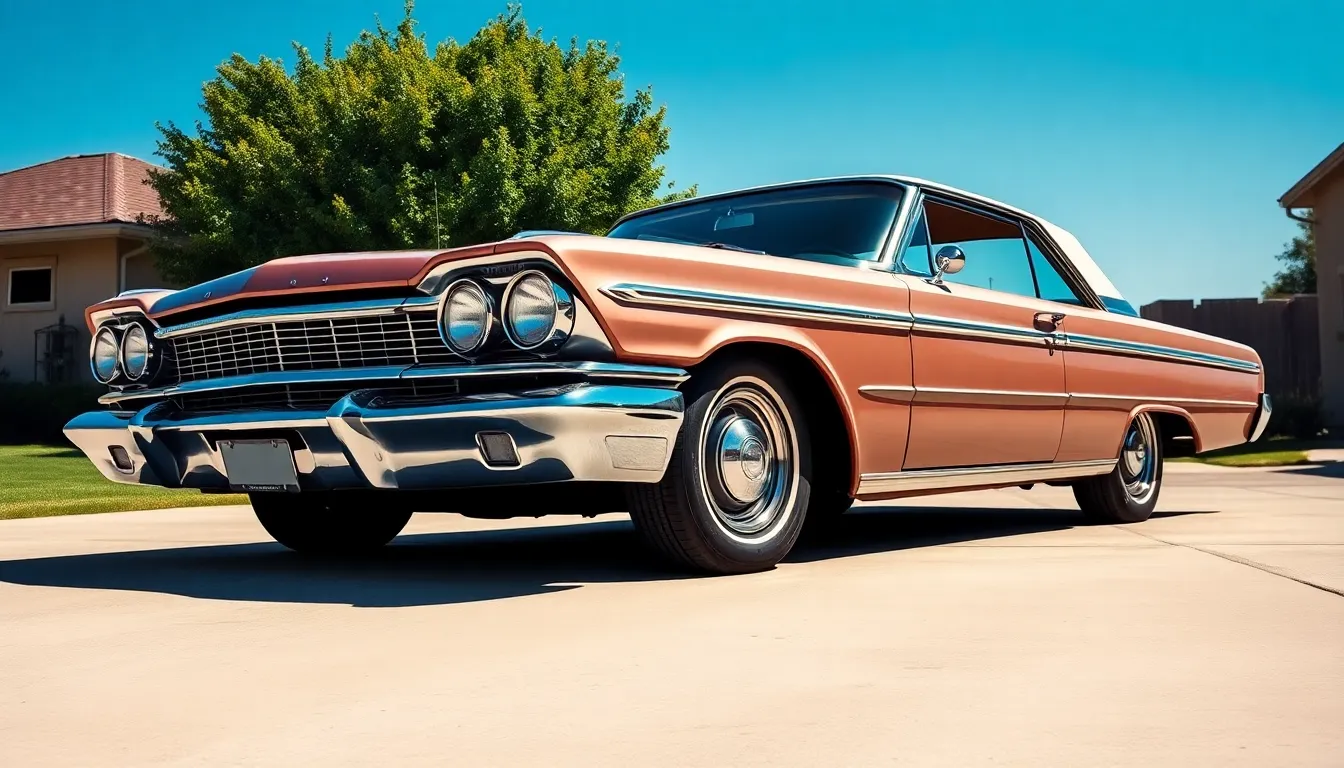
Ford Galaxie 500 models demonstrate solid construction fundamentals while presenting exact mechanical challenges that owners encounter across different production years. Understanding these reliability patterns helps potential buyers make informed decisions and current owners maintain their vehicles effectively.
Known Mechanical Problems
Carburetor issues rank among the most frequent problems we observe in Galaxie 500 models, particularly affecting the Rochester Quadrajet units found in later production years. These carburetors develop fuel leaks at the base gasket and experience accelerator pump failures that cause hesitation during acceleration.
Transmission problems occur primarily in Cruise-O-Matic automatic units from 1967-1970 model years. Internal clutch band adjustments slip out of specification, creating harsh shifting patterns and delayed engagement from park to drive. Manual transmission models experience synchronizer wear in second and third gears after 80,000 miles of operation.
Cooling system weaknesses appear in radiator cores and water pump assemblies across all engine configurations. Brass radiator tubes develop pinhole leaks near the tank connections, while water pump impellers corrode and lose pumping efficiency. Models equipped with air conditioning experience additional strain on cooling components during summer operation.
Electrical system failures concentrate in the charging circuit and ignition components. Alternators from 1965-1968 model years produce inconsistent output due to brushes wearing prematurely. Ignition points require replacement every 12,000 miles, and condenser failures cause rough idle conditions and poor fuel economy.
Suspension components show predictable wear patterns in ball joints and tie rod ends. Front ball joints develop excessive play after 60,000 miles, creating wandering steering characteristics and uneven tire wear. Rear leaf spring bushings deteriorate and cause squeaking noises over bumps.
Maintenance Considerations
Engine oil change intervals require attention every 3,000 miles due to the absence of modern filtration systems and oil formulations. V8 engines consume approximately 6 quarts of oil during each service, with high-performance 390 and 427 cubic inch variants requiring premium grade lubricants.
Brake system maintenance involves bleeding hydraulic lines annually and replacing brake shoes every 25,000 miles under normal driving conditions. Models equipped with front disc brakes from 1968 onward require pad replacement every 30,000 miles and rotor resurfacing every other service interval.
Fuel system cleaning becomes necessary every 15,000 miles to prevent carburetor deposits and maintain optimal performance. We recommend adding fuel system cleaner during each fill-up and performing complete carburetor rebuilds every 40,000 miles for consistent operation.
Chassis lubrication points require service every 5,000 miles using lithium-based grease for ball joints, tie rod ends, and suspension bushings. Manual transmission models need gear oil changes every 30,000 miles, while automatic transmissions benefit from fluid and filter replacement every 25,000 miles.
Cooling system maintenance includes radiator flushing every two years and thermostat replacement every 50,000 miles. We suggest using 50/50 antifreeze mixture year-round and inspecting hoses for cracking or swelling during each oil change service.
Collectibility and Market Value
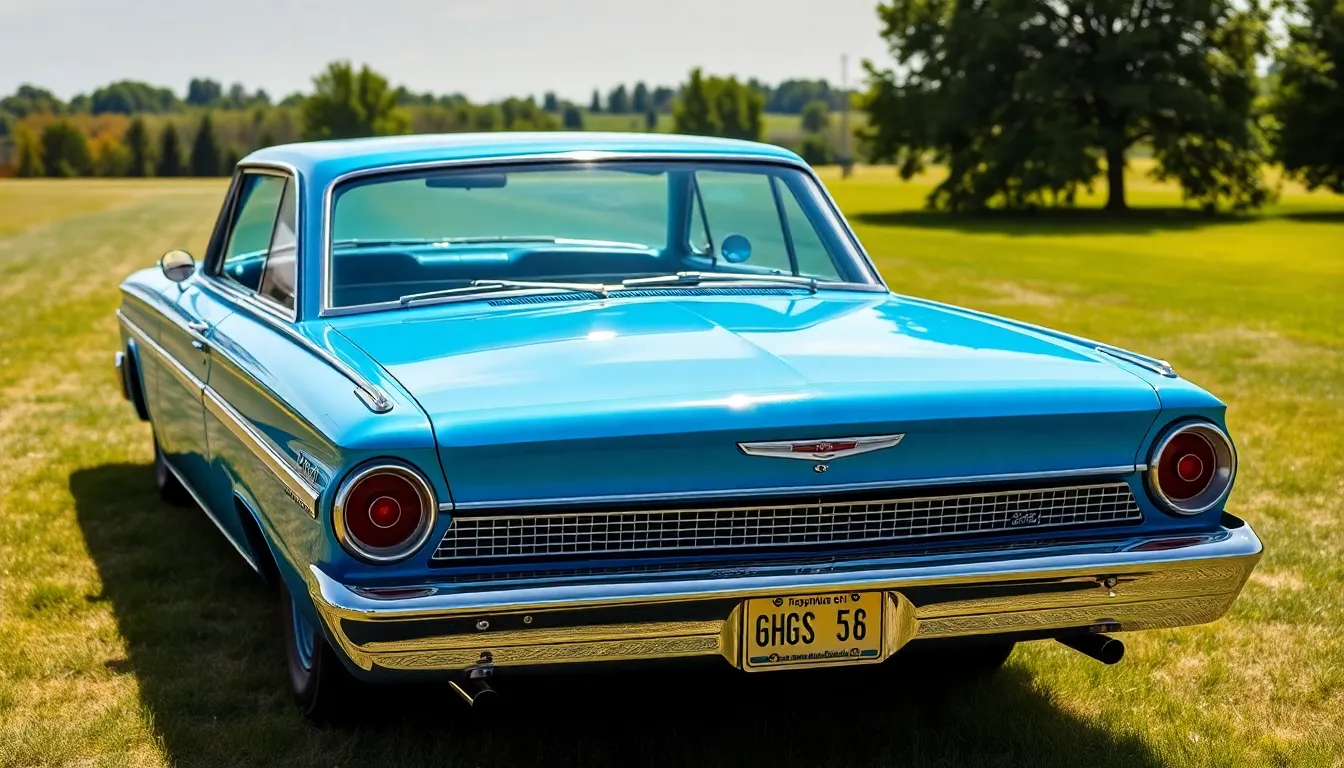
The Ford Galaxie 500 commands important attention in today’s classic car market with values reflecting its importance in American automotive history. Collectors recognize the model’s combination of performance heritage and production rarity as key factors driving market demand.
Investment Potential
Current market values position the Galaxie 500 as an accessible entry point into classic Ford ownership, with examples ranging from $8,000 for project cars to $45,000 for concours-quality restorations. The 1963-1964 fastback models command the highest premiums, particularly those equipped with the 427 cubic inch V8 engine, which can reach values exceeding $65,000 in pristine condition.
Appreciation trends over the past decade show steady growth in Galaxie 500 values, with convertible models experiencing the strongest gains at 6-8% annually. The 1965 model year represents a sweet spot for collectors, offering the updated styling without the premium pricing of earlier fastbacks.
Performance variants generate the most investment interest, with NASCAR-homologated models and those featuring the 390 cubic inch V8 showing consistent market strength. Documentation proving original drivetrain components significantly impacts valuations, often adding 20-30% to asking prices.
| Model Year | Body Style | Engine | Current Value Range |
|---|---|---|---|
| 1963-1964 | Fastback | 427 V8 | $35,000-$65,000 |
| 1965-1966 | Convertible | 390 V8 | $25,000-$45,000 |
| 1967-1968 | Two-door | 289 V8 | $15,000-$28,000 |
| 1969-1974 | Four-door | 302 V8 | $8,000-$18,000 |
Finding Parts and Restoration
OEM replacement parts remain readily available through Ford’s licensed reproduction network, with body panels, trim pieces, and interior components offered by multiple suppliers. Companies like NPD and Dearborn Classics maintain extensive Galaxie 500 inventories, covering approximately 85% of commonly needed restoration components.
Engine rebuilding presents fewer challenges compared to other Ford models from the era, as the 289, 302, 390, and 427 V8s share many internal components with other Ford applications. Specialty machine shops across the United States maintain expertise in these powertrains, with complete rebuild costs typically ranging from $3,500 to $8,500 depending on engine displacement.
Interior restoration costs vary significantly based on material choices and original condition, with complete upholstery packages available from $1,200 to $3,500. Dash pad replacement represents a common restoration expense, with reproduction units costing approximately $350-$450 depending on model year and options.
Chrome restoration often represents the highest single expense in Galaxie 500 projects, as the extensive brightwork requires professional refinishing in most cases. Bumper rechroming costs between $800-$1,200 per unit, while trim piece restoration can add $2,000-$4,000 to project budgets depending on completeness and condition of original components.
Ford Galaxie 500 vs Competitors
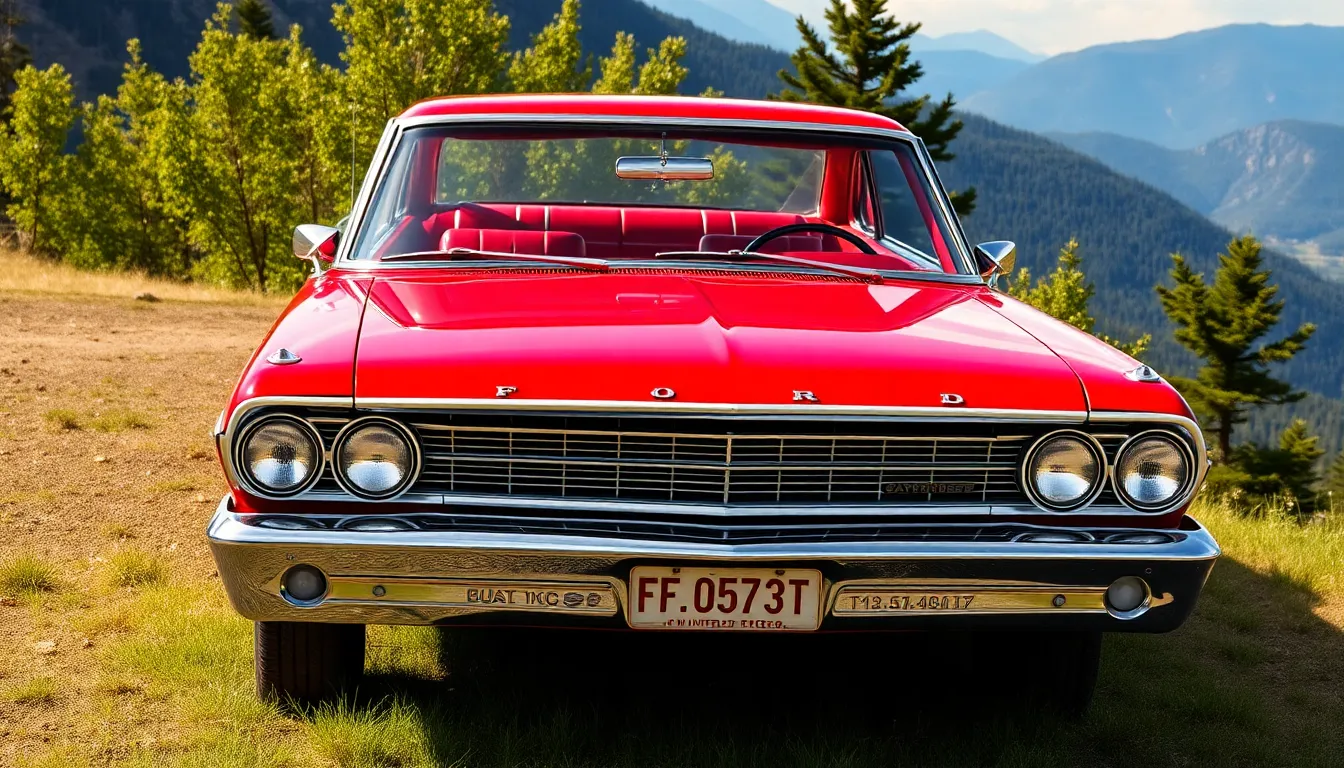
The Ford Galaxie 500 faced fierce competition from established rivals during its production years. Chevrolet’s Impala SS emerged as the primary competitor, offering similar performance credentials with its 327 and 396 cubic inch V8 engines. Plymouth’s Sport Fury presented another formidable challenge, featuring aggressive styling and potent 383 and 440 cubic inch powerplants.
Performance comparisons between these muscle cars revealed distinct characteristics across manufacturers. Ford’s 390 cubic inch V8 produced 315 horsepower in standard configuration, matching the Chevrolet Impala SS 396’s base output. Plymouth’s 383 cubic inch engine delivered comparable power figures at 325 horsepower, creating a closely contested performance triangle.
| Model | Base V8 Engine | Horsepower | Quarter Mile Time | Top Speed |
|---|---|---|---|---|
| Ford Galaxie 500 | 390 cubic inch | 315 hp | 15.8 seconds | 118 mph |
| Chevrolet Impala SS | 396 cubic inch | 325 hp | 15.6 seconds | 120 mph |
| Plymouth Sport Fury | 383 cubic inch | 325 hp | 15.7 seconds | 119 mph |
Pricing strategies among the three manufacturers remained competitive throughout the muscle car era. Base Galaxie 500 models started at $2,674 in 1965, positioning Ford slightly below the Impala SS at $2,729. Plymouth undercut both competitors with Sport Fury pricing beginning at $2,598, making it the most affordable option for performance-oriented buyers.
Interior space measurements favored the Galaxie 500 in several key areas. Ford engineers designed the cabin with 108.5 inches of hip room compared to the Impala’s 107.2 inches and Plymouth’s 106.8 inches. Trunk capacity reached 23.6 cubic feet in the Galaxie 500, exceeding both competitors by approximately 2 cubic feet.
Distinctive styling elements set each model apart in the crowded full-size market. Ford’s stacked headlight design from 1965 onward created instant recognition, while Chevrolet maintained its traditional round headlight configuration. Plymouth opted for a more aggressive front end treatment with rectangular parking lights integrated into the grille assembly.
Market share data from 1967 illustrates the competitive industry during peak muscle car years. Chevrolet dominated with 42% of full-size performance car sales, followed by Ford at 31% and Plymouth capturing 18%. Regional preferences varied significantly, with Ford maintaining stronger positions in western markets and Plymouth performing better in northeastern territories.
Racing achievements influenced consumer perception across all three platforms. Ford’s NASCAR dominance with the 427 cubic inch engine translated to increased showroom traffic, while Chevrolet’s drag racing success with the L78 396 attracted quarter-mile enthusiasts. Plymouth’s success in NHRA competition with the 440 Six Pack engine reinforced its performance reputation among serious racers.
Conclusion
The Ford Galaxie 500 remains a testament to American automotive engineering at its finest. We’ve explored how this remarkable vehicle successfully bridged the gap between family practicality and muscle car performance during one of the most exciting eras in automotive history.
Today’s classic car market continues to recognize the Galaxie 500’s enduring appeal. Whether you’re drawn to its racing heritage or impressive V8 powertrains we believe this Ford deserves serious consideration from any enthusiast seeking authentic American muscle.
For those ready to experience the golden age of full-size performance cars the Galaxie 500 offers an accessible entry point into classic car ownership. Its combination of style reliability and investment potential makes it a compelling choice that we’re confident will provide years of driving satisfaction.
Frequently Asked Questions
What years was the Ford Galaxie 500 produced?
The Ford Galaxie 500 was produced from 1962 to 1974. It was launched in 1962 as a premium trim level within Ford’s full-size Galaxie lineup and remained in production for 12 years until Ford consolidated its full-size offerings under the LTD nameplate in 1974.
What engine options were available in the Ford Galaxie 500?
The Galaxie 500 offered a diverse V8 engine lineup ranging from the economical 289 cubic inch V8 to the powerful 427 cubic inch V8. Popular options included the 390 cubic inch V8 producing 315 horsepower, catering to both casual drivers and performance enthusiasts seeking racing pedigree.
How much is a Ford Galaxie 500 worth today?
Current market values range from $8,000 for project cars to over $65,000 for pristine fastback models with the 427 V8 engine. Convertible models show particularly strong appreciation trends, with steady growth in the classic car market making them attractive investment opportunities.
What were the main competitors of the Ford Galaxie 500?
The primary competitors were the Chevrolet Impala SS and Plymouth Sport Fury. All three offered comparable performance with similar horsepower outputs around 315 hp. However, Chevrolet dominated market share in 1967, while Ford and Plymouth competed for second place in the full-size performance segment.
What body styles were offered for the Ford Galaxie 500?
The Galaxie 500 was available in multiple body styles including two-door and four-door sedans, convertibles, and fastback coupes. Four-door models could accommodate up to seven passengers, while the fastback roofline introduced in 1968 catered specifically to performance-oriented buyers.
What are common problems with the Ford Galaxie 500?
Common issues include carburetor problems, transmission difficulties, and cooling system weaknesses. Regular maintenance is crucial, with recommended intervals for oil changes, brake system upkeep, fuel system cleaning, and cooling system maintenance to prevent these typical mechanical problems from developing.
Did the Ford Galaxie 500 have good performance capabilities?
Yes, the Galaxie 500 offered excellent performance, especially with the 390 and 427 cubic inch V8 engines. Models with the 390 V8 demonstrated enhanced cornering stability, while the 427 V8 provided racing-level performance. NASCAR success significantly influenced consumer perception of its capabilities.
What transmission options were available?
The Galaxie 500 offered three transmission choices: a standard three-speed manual, an optional four-speed manual for performance enthusiasts, and the Cruise-O-Matic three-speed automatic. Each transmission was designed to enhance the driving experience based on the owner’s preferences and driving style.

